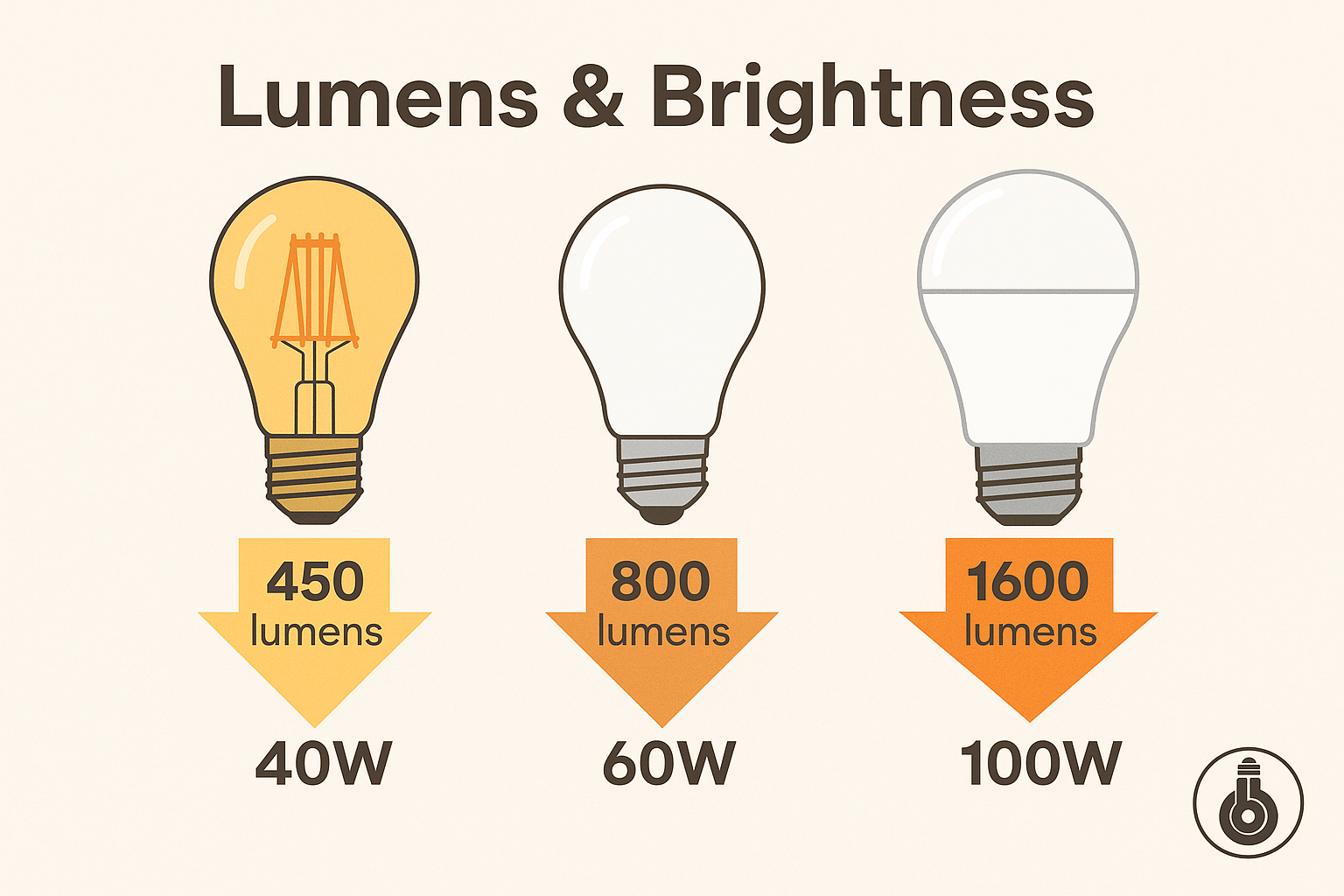When shopping for lighting, most people still think in terms of watts. But watts measure energy use, not brightness. If you want to understand how bright a bulb is, you need to look at lumens.
What Are Lumens?
Lumens (lm) measure the amount of light a bulb produces. The higher the lumen count, the brighter the light. Unlike watts, which tell you how much electricity a bulb uses, lumens actually tell you how much light you’ll see.
For example:
-
A 60W incandescent bulb = about 800 lumens
-
A 100W incandescent bulb = about 1600 lumens
But today’s LED bulbs use far less power to produce the same amount of light. An LED that gives you 800 lumens might only use 8 to 12 watts!
Why Lumens Matter
Understanding lumens helps you:
-
Choose the right brightness for your space
-
Avoid over- or under-lighting an area
-
Pick energy-efficient bulbs without sacrificing visibility
 How Many Lumens Do You Need?
How Many Lumens Do You Need?
Here’s a general guide:
-
Living Room: 1,500–2,500 lumens total
-
Kitchen: 3,000–4,000 lumens (more over work areas)
-
Bathroom: 4,000+ lumens (especially for mirrors)
-
Bedroom: 1,000–2,000 lumens
-
Office: 3,000 lumens or more, depending on the task
These are total lumens across all fixtures in the room. If you have multiple light sources, you can divide the total as needed.
Lumens vs. Watts
Here’s a quick chart comparing old incandescent wattage to modern LED lumen output:
| Incandescent (W) | Approx. Lumens |
|---|---|
| 40W | 450 lm |
| 60W | 800 lm |
| 75W | 1,100 lm |
| 100W | 1,600 lm |
So next time you see an LED marked "800 lumens," just know it’s about as bright as an old 60W bulb—but much more efficient.
Final Thoughts
Wattage used to be the standard, but it’s not a good way to judge brightness anymore. Lumens give you a clear picture of how much light a bulb produces—and help you make smarter, energy-saving choices.
Need help finding the right brightness for your space? Come by Buchanan Lighting or browse our website. We’ll help you get the light just right.

